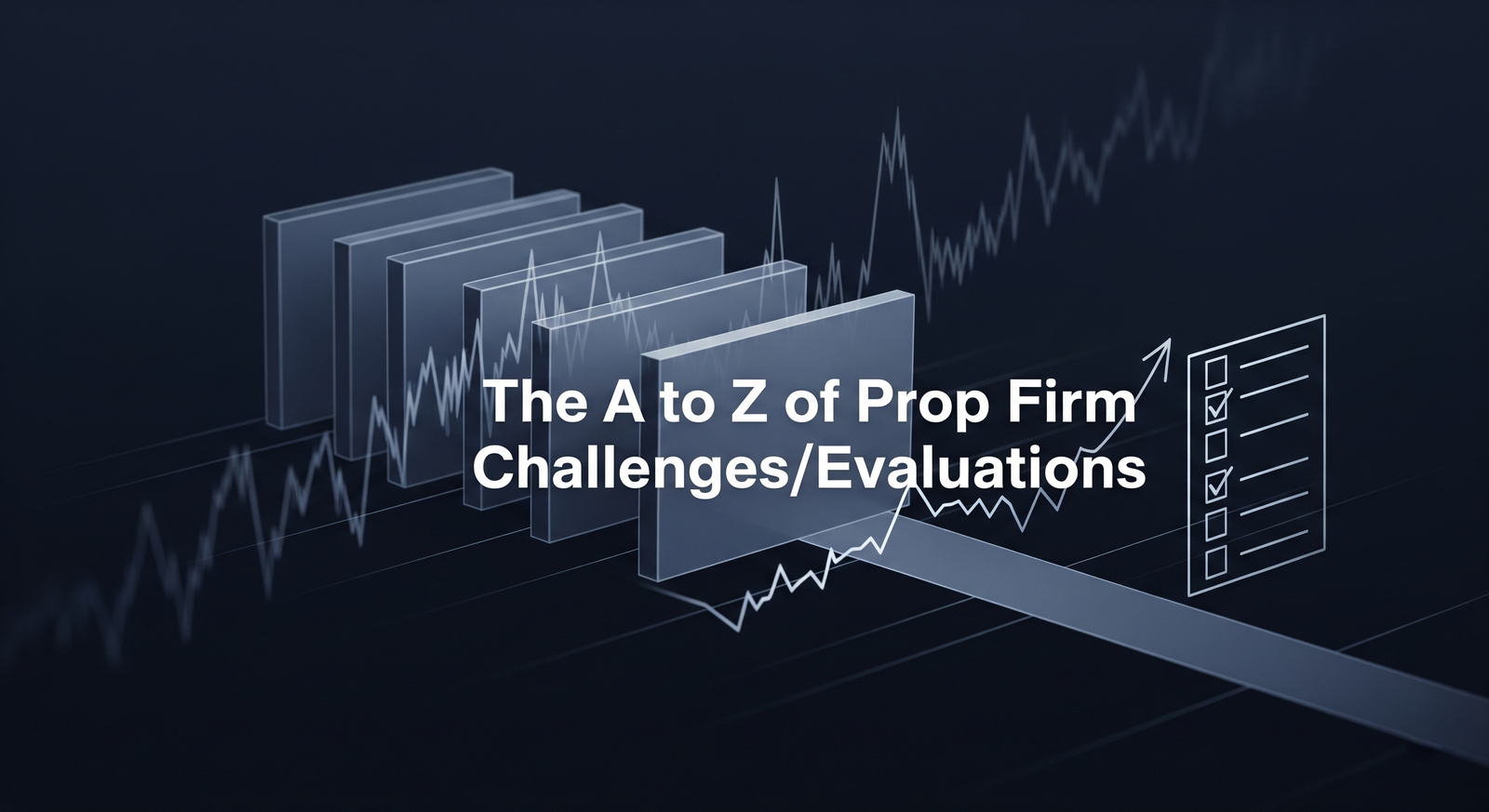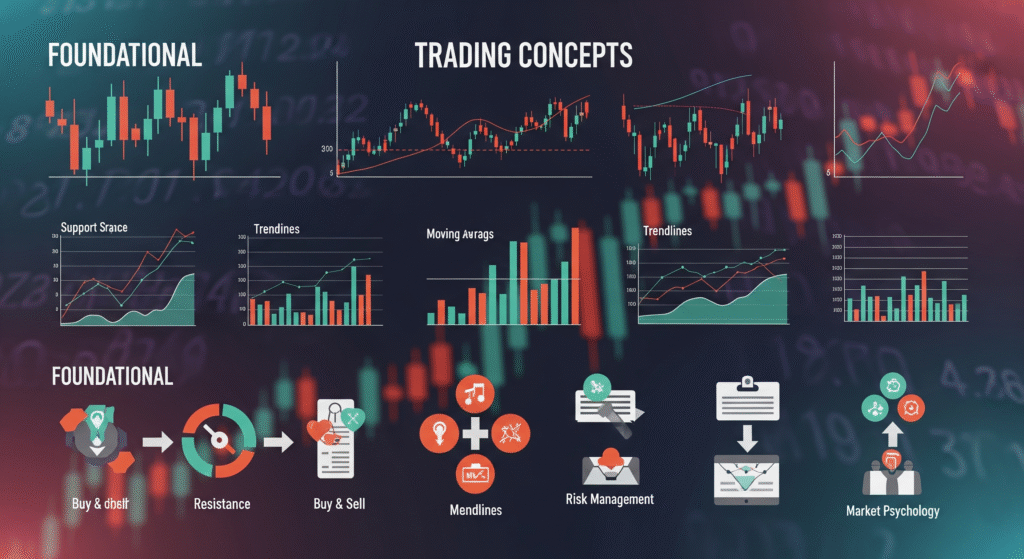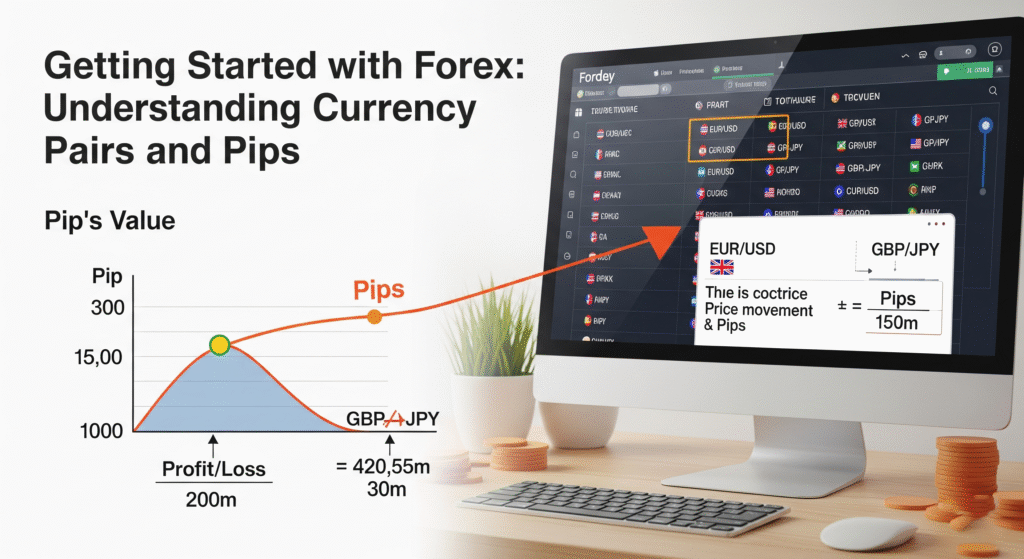He is a Full-time trader and Trading Mentor @ Findependence Trading Academy, with over 18 years of hands-on experience in the stock and forex markets. His journey from being a working professional to achieving financial independence through trading has inspired hundreds of aspiring traders to take control of their financial future.
His trading style revolves around identifying high-probability swing setups in equities and executing precise intraday trades in the forex markets. He treats trading like a business, where rules, clarity, and risk limits aren’t optional—they’re essential. He’s trained over 100+ traders through personalized coaching and structured programs, focusing not just on strategy but on building the mindset and systems that lead to long-term success.
A strong believer in keeping trading simple and practical, He shares real-world lessons drawn from market wins, losses, and years of evolving with changing conditions. He is also the author of “Getting Started with Technical Analysis” and a creator of custom TradingView indicators designed to give traders an edge.
When he’s not charting or mentoring, you’ll find him enjoying a game of Table Tennis.
Table of Contents
The A to Z of Prop Firm Challenges/Evaluations
A Detailed Breakdown of the Funded Trader Assessment Process
There’s a certain rush of excitement the first time you come across a prop firm ad:
“Get funded up to $100,000 to trade. No need to risk your own capital.”
Sounds like a dream, right?
I’ll be honest—when I first started exploring prop firms a few years ago, after nearly a decade and a half of retail trading, I felt that same excitement.
But I also knew better than to rush in blind.
Behind those flashy banners lies a structured, rule-based evaluation process—designed not to hand out money, but to separate gamblers from professionals.
And here’s the truth: most traders fail it.
If you’re serious about getting funded and staying funded, you need to understand the challenge process from start to finish.
This post is your complete roadmap—A to Z—of:
What to expect
How to prepare
And the common traps most traders overlook
Want to master the fundamentals before taking on that challenge?
Start with real-world, practical stock market courses in Kothrud that prepare you for the rules, structure, and mindset prop firms demand.
Let’s break it down.

What Is a Prop Firm Challenge?
A Prop Firm Challenge, also known as an Evaluation or Assessment Phase, is a test. The firm gives you a demo account, outlines some very specific rules and profit targets, and watches how you handle trades under pressure.
If you pass, you move to a funded phase, where you earn real payouts by trading the firm’s capital under even more scrutiny.
But here’s the kicker:
- Only around 5%–10% of traders pass on the first attempt.
- Even fewer stay funded for more than a few months.
Why? Because this isn’t just a test of your strategy—it’s a test of your mindset, discipline, and respect for risk.
The Typical Challenge Structure
Let’s walk through a standard two-phase challenge model (like FTMO, The Funded Trader, E8, etc.):
Phase 1 – Prove You Can Profit (with Control)
- Profit Target: 8%–10% of the account value.
- Max Daily Loss: Usually 5%.
- Max Overall Loss: Typically 10%.
- Time Limit: Unlimited time to Pass, but account cannot remain inactive for more than 30 days.
- Minimum Trading Days: 5 to 10 days.
Real Emotion:
You feel the pressure here. That 10% target might not sound huge—until you realize you can’t afford a single big mistake. It tests whether you can make steady, controlled profits instead of YOLO trades.
Phase 2 – Prove You Can Be Consistent
- Profit Target: Lower, usually 5%.
- Drawdown Rules: Same as Phase 1.
- Time Limit: Unlimited time to Pass, but account cannot remain inactive for more than 30 days.
- Minimum Trading Days: 5 to 10.
This phase is easier numerically but harder mentally. Many traders relax after Phase 1 and lose focus. That’s the trap.
Funded Phase – You Made It
- Trade firm capital (often a simulated live account).
- Follow risk and consistency rules.
- Earn profit splits (typically 70% to 90% of profits).
- Stay within drawdown limits or risk losing your funded status.
Monetary Conditions to Pass
You pay a fee to attempt the challenge—this can range from ₹10,000 to ₹40,000+ depending on the account size.
- One-time fee, refunded once funded (by most firms).
- If you fail, it’s gone. No refunds.
- Retakes may be free if you stay within rules but don’t hit targets.
What You’re Really Paying For:
- Access to capital.
- Opportunity to prove yourself.
- Learning experience (if you treat it seriously).
Non-Monetary Conditions: The Hidden Challenges
IP Restrictions and Location Triggers
Most firms track your login location and IP address. You can’t:
- Share login credentials.
- Use a VPS from another country unless approved.
- Log in from different cities/countries on the same day.
Violating this? Instant disqualification. No questions asked.
Consistency Rules
Some firms require your daily profits to be consistent. If you make 90% of profits in one day, you might be flagged—even if you met the target.
Why? Because they want risk-managed traders—not lucky ones.
Behavioral Monitoring
Some platforms analyze:
- Lot size increases before big news.
- Martingale or grid systems.
- Holding trades over weekends against rules.
You may “pass” the challenge but be rejected during manual review.
Payout Conditions (Don’t Skip This!)
Once you’re funded, your trading continues under strict monitoring. But now the real money is involved.
Typical Payout Models
- First Payout: After 14–30 days of being funded.
- Subsequent Payouts: Every 2 weeks or monthly.
- Payout Split: Ranges from 70/30 to 90/10 in favor of the trader.
- Scaling Bonuses: Higher split + capital increases with consistent performance.
Payout Methods
- Crypto (USDT, BTC, ETH)
- PayPal or Skrill (less common)
Legality of Trading with Prop Firms in India
Let’s be clear: There’s no specific law banning prop firm trading in India, but…
Key Points:
- You’re trading on demo/simulated platforms, not through SEBI-registered brokers.
- Forex trading outside recognized exchanges is a grey zone. But these trades are simulated.
- Income earned is categorized as business income or professional income—taxable under Indian law.
- RBI Regulations may frown upon sending money abroad for “investment or speculation.” But since most firms don’t require real capital, this is a gray area—not black-and-white illegal.
Our Take (after consulting professionals):
If you’re trading simulated capital and getting paid for your performance (not from investing), you’re operating in a legal gray area—but one that’s widely practiced and low-risk if you’re transparent about taxes.
Scaling Plan: The Hidden Gem
This is where a good trader can really grow.
Most Firms Offer:
- Account scaling every 2–4 months if:
- You don’t violate risk rules.
- You withdraw responsibly.
- You maintain consistency.
- You don’t violate risk rules.
Example:
Start with $50,000 → $100,000 → $200,000 → $400,000
All without ever risking your own capital.
Emotion Check:
This is where trading feels real. Not because of the money—but because of the freedom that consistent performance unlocks. That’s what keeps disciplined traders going.
Tips from an Experienced Trader: How to Actually Pass
- Trade your system for at least 3 months before challenging.
Don’t treat challenges as your testing ground. - Start with a small lot size—even if the temptation is huge.
- Journal everything.
What you felt. What you saw. What you did. - Stay flat during high-impact news.
Not worth risking your funded status over CPI or NFP spikes. - Don’t rush to withdraw.
Build a buffer. Keep the firm’s trust. Withdraw gradually.
Real Talk: The Challenge Isn’t the Hardest Part
The challenge is exciting. It feels like a competition.
But the real work starts once you’re funded.
You now represent a business—the prop firm. They’re trusting you with simulated capital, real payouts, and long-term performance.
Your goal now? Stay unemotional. Stay consistent. & Stay funded.
If you can master that…you’ve crossed into professional territory. Welcome to the 5%.
Final Words: From My Heart to Yours
In 18 years of trading, I’ve seen every type of market, every kind of trader.
I’ve coached beginners, burned-out veterans, and hopeful dreamers.
But nothing compares to the clarity and focus you develop during a prop firm challenge.
You’re no longer trading to prove anything.
You’re trading to stay in the game.
And in trading, that’s all that matters.
If you’re preparing for that level of focus and want to build the right habits early, start with practical, real-world forex trading courses in Kothrud that teach you how to trade not just with skill—but with staying power.



